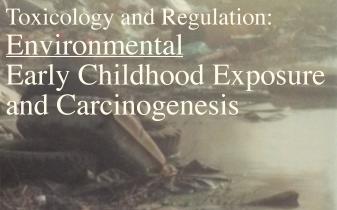 |
||||
 |
|||||||
Community |
|||||||
Environmental |
|||||||
Occupational |
|||||||
CALENDAR |
||||||||||||||


The recent release of updated Risk Assessment Guidelines, the first since 1986, with an accompanying new section on early childhood exposure and carcinogenesis, marks a significant development in what the scientific community considers important and how cancer development is understood. Cancer has always been considered a disease of aging and, in fact, most cancers do take many years to develop and generally strike older people. But two other views have gained attention as having to be looked into more closely. The first is that in animal models in utero exposures produce early child hood cancers; there is not enough data on this in humans and more is required. It is certainly the case that although adults and children share many characteristics of cancer, both in terms of sites and response to certain known cancer agents, there are also many distinctions. Wilm's tumor (kidney) and retinoblastoma (eye) are exclusively childhood tumors; others, especially the embryonic cell tumors, occur predominantly in children: leukemias, brain and nervous system tumors, lymphomas, bone cancers and soft tissue sarcomas. Adult tumors are predominantly carcinomas, of such tissue as breast, lung, colon, prostate, skin.
Second, the question has been raised as to the effect of exposure to chemicals or other cancer causing or cancer enhancing agents on susceptibility to cancer later in life.
The amount of data available on the relationshp between the predominant childhood cancers and chemical exposure, and on the relationship between earlly exposure and later cancer development is sparse and is what these guidelines intend to address. By pointing out the specific issues and their importance such guidelines intend to bring this to the attention of researchers as well as policy makers and to begin to generate the type of data that will answer these questions.
Some of the issues that will be addressed are as follows:
Source: U.S. EPA, Assessing Susceptibility to early child exposure
